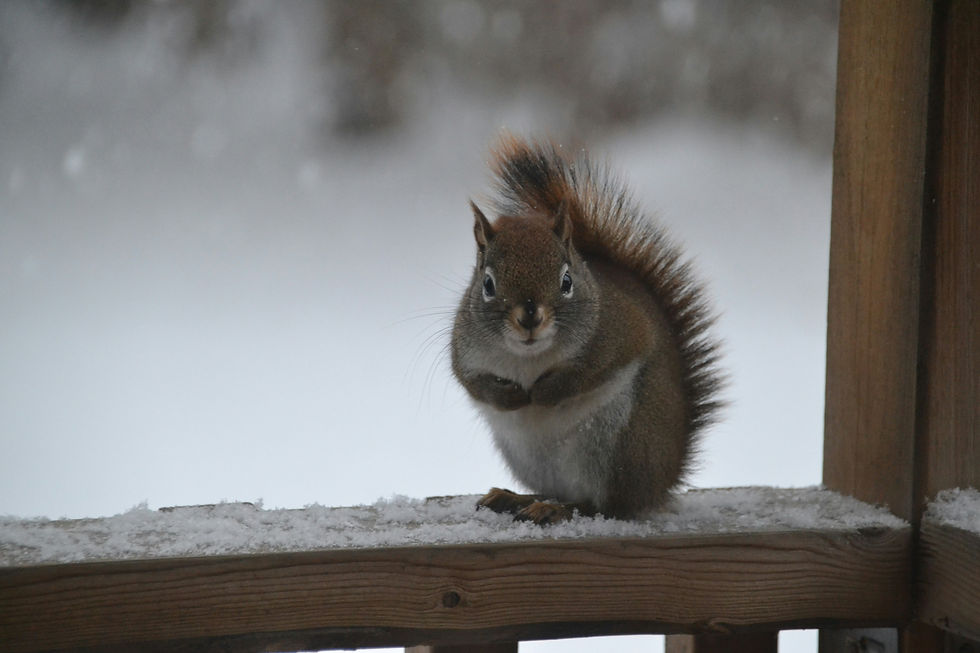Cooler Weather, More Rodents: How to Keep Them Out
- Jeff Overstreet

- Aug 14
- 4 min read
Fall may still feel a ways off, but those cooler nights are coming—and that’s when rats, mice, and squirrels start house-hunting. When the temperature drops, your attic, soffits, and walls can look like prime real estate to them, offering warmth, shelter, and protection from the elements.
We spoke with Tyler Overstreet, Bug Zone’s resident exclusion expert, to give you a clear picture of what to look for, why timing matters, and how to make your home completely off-limits before the cold sets in.
The Early Red Flags
Rodents and squirrels rarely make a dramatic entrance. More often, they leave small but telling signs if you know where to look. Tyler points out that chewing on eaves is one of the first giveaways. It’s not just cosmetic damage—those chew marks can open pathways for water, leading to rot and forcing you to replace sections far earlier than expected.

Squirrels are just as destructive in their own way.
When they nest inside soffits, the weight and activity can cause the material to sag, sometimes so badly that entire sections need to be replaced. Look closely at the exterior for dark, oily streaks along common travel paths; these “rub marks” are caused by the oils in their fur as they squeeze through the same gap repeatedly. Even a crack or hole in your brickwork small enough to fit a pencil can be an open invitation.
Inside, the clues get harder to ignore. Droppings in the attic are an obvious sign, and any scratching or scurrying—whether at night or during the day—means they’ve already moved in. If those noises are keeping you up, Tyler says you’re not just dealing with a nuisance—you’re dealing with a growing problem.
Why You Can’t Wait Until You Hear Them
The damage from rodents and squirrels builds fast. Electrical wires are a favorite chew target, and frayed wiring can lead to a fire. Once they gain access to your attic, they also have access to the wall voids and the plumbing lines coming into your home.
That means they can travel unseen between floors, chew on water lines, and spread contamination well beyond the attic itself.
Inside, they’ll tear into insulation, damage stored belongings, and soil the space with droppings and urine. That contamination isn’t just unsanitary—it can carry harmful bacteria and allergens into your home’s air.
Did you know? A single pair of roof rats can produce up to 40 offspring in a year, with litters arriving as close together as every 21 days once they mature.
That means a couple of rodents in September can turn into a full-blown (extended) family affair by January. By the time you hear them regularly, the damage is already well underway.
What’s Drawing Them In
Population booms usually start with a consistent food source—sometimes on your property, sometimes next door. Overly generous bird feeding is a common trigger. Even if squirrels aren’t the intended guests, they’ll show up for the easy meal, and rodents are never far behind.
Pet food, especially dog and bird seed, stored outdoors in unsealed containers is another major attractant. Thriving gardens without barriers and open compost piles provide steady snacks that keep populations high.
While food fuels the boom, the decision to actually enter your home often comes from easy access points. Overhanging tree limbs act like highways straight to your roof, giving rodents a safe, direct route to attic vents, soffits, or other openings. Keeping trees trimmed at least four feet away from your roofline removes one of their favorite travel routes.
Did you know? A rat can jump up to four feet horizontally and more than a foot vertically. That means even a seemingly small gap between a branch and your roof isn’t much of a challenge for them.
Even if you’ve secured your own property, a neighbor’s food source or untrimmed trees can still send pests your way.
How Bug Zone Locks Them Out for Good
When the weather cools, rodents move fast—but Bug Zone moves faster. We start with a full inspection to identify whether we’re dealing with rats, mice, or squirrels, and where they’re getting in. Trapping comes first, which Tyler says is key to reducing the chance they’ll try to chew their way back inside once we start sealing things up.
From there, we close off every possible entry point except the most active one, which gets fitted with a one-way cage. This allows critters to leave but not return. After three to seven days, we return to check for any new activity. Once we’re sure the house is clear, we remove the cage, seal that final gap, and finish the repair with durable metal, painted to match your home. The result is so solid that even roofers wouldn’t need to remove it during a shingle replacement.

Don’t Wait for the First Cold Snap
Once temperatures drop, rodents and squirrels will be actively looking for a warm place to ride out the season—and your home could be at the top of the list. Acting now not only keeps them out, it saves you from costly repairs, health risks, and the stress of sleepless nights.
If you’ve noticed any of these warning signs—or even just suspect a problem—call Bug Zone at (972) 867-9800 or email office@bugzonepest.com. We’ll find the problem, remove the pests, and seal your home so they can’t get back in—before the cold weather hits.







Comments